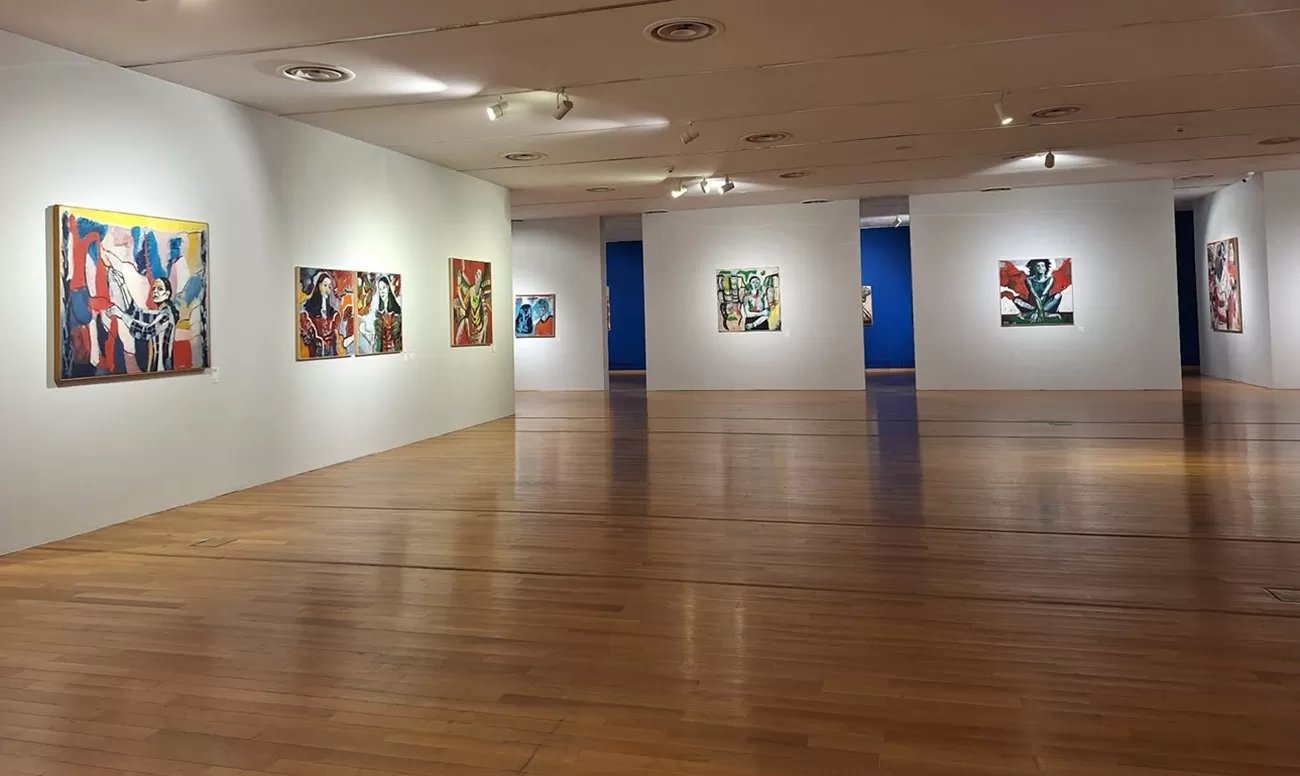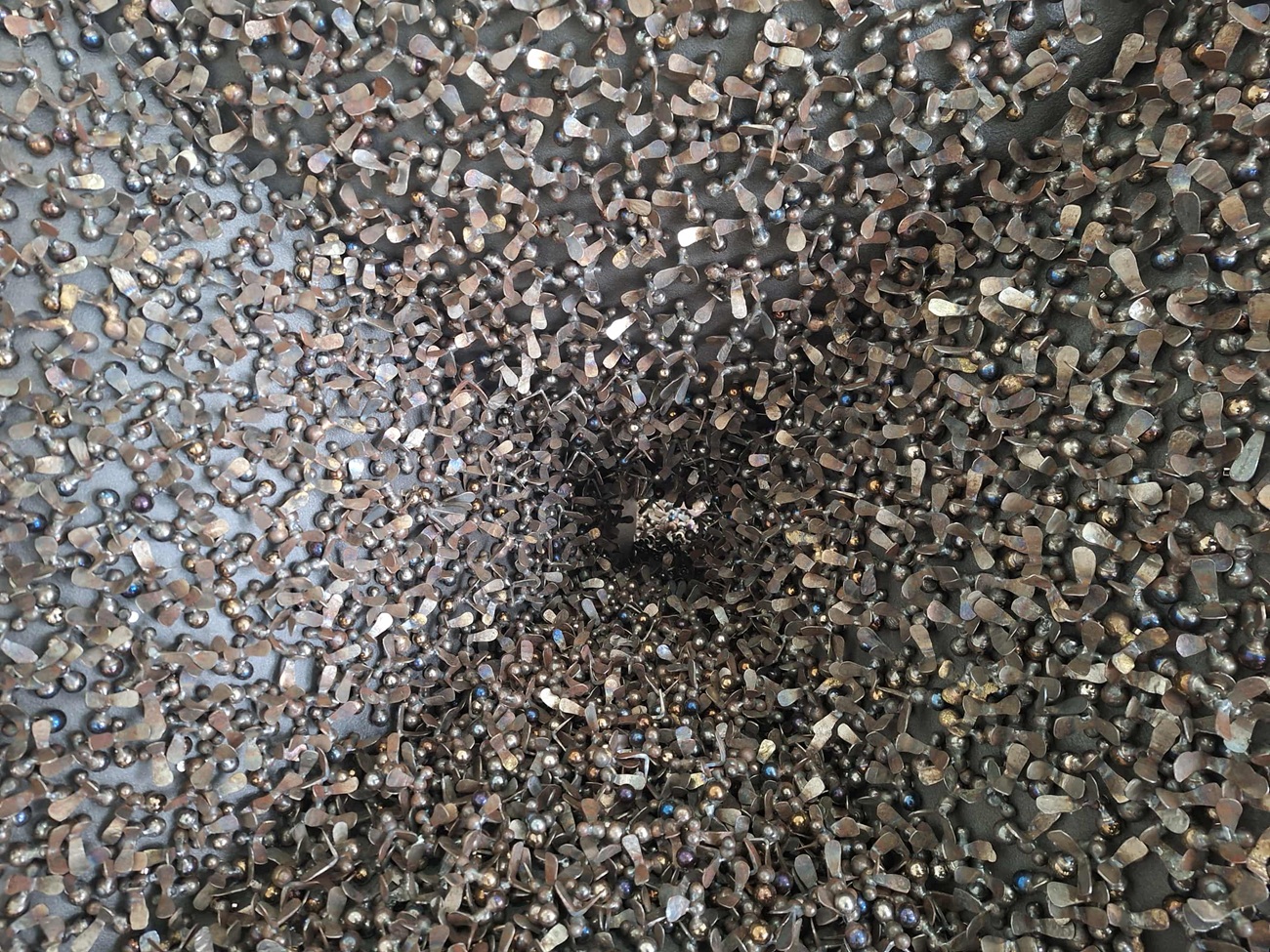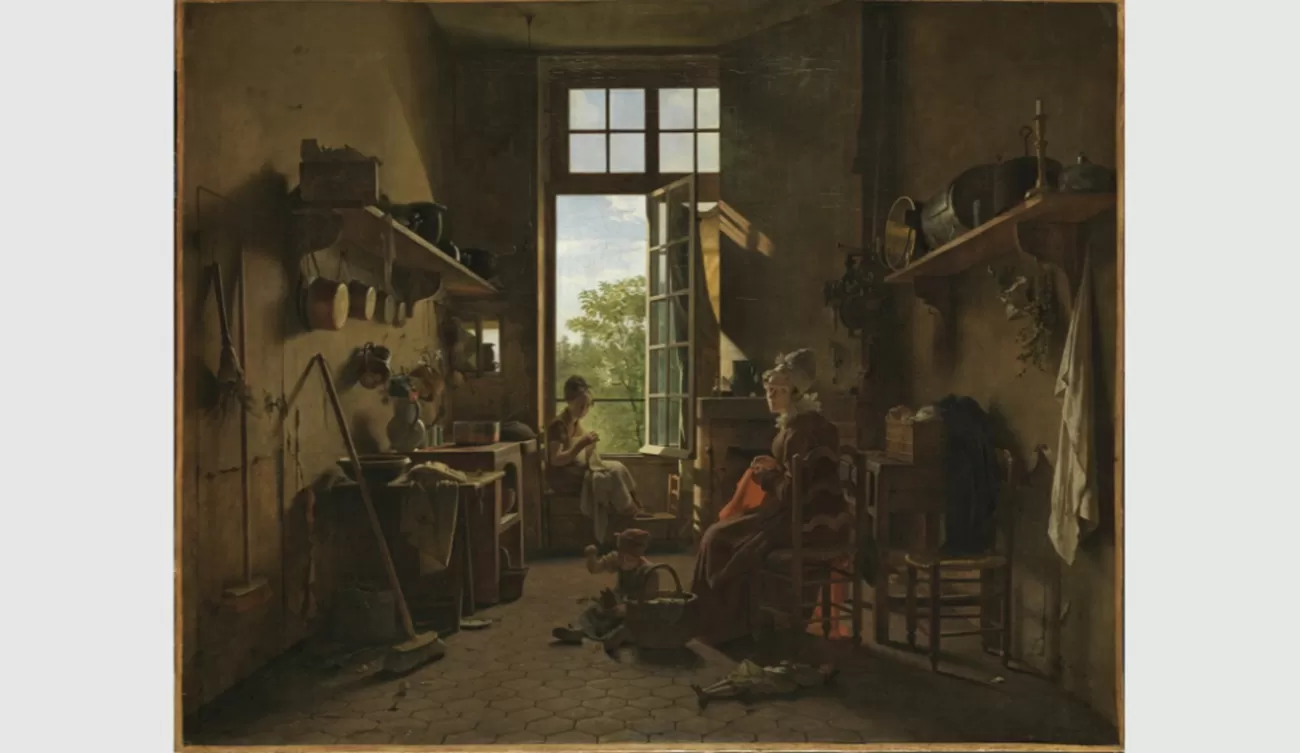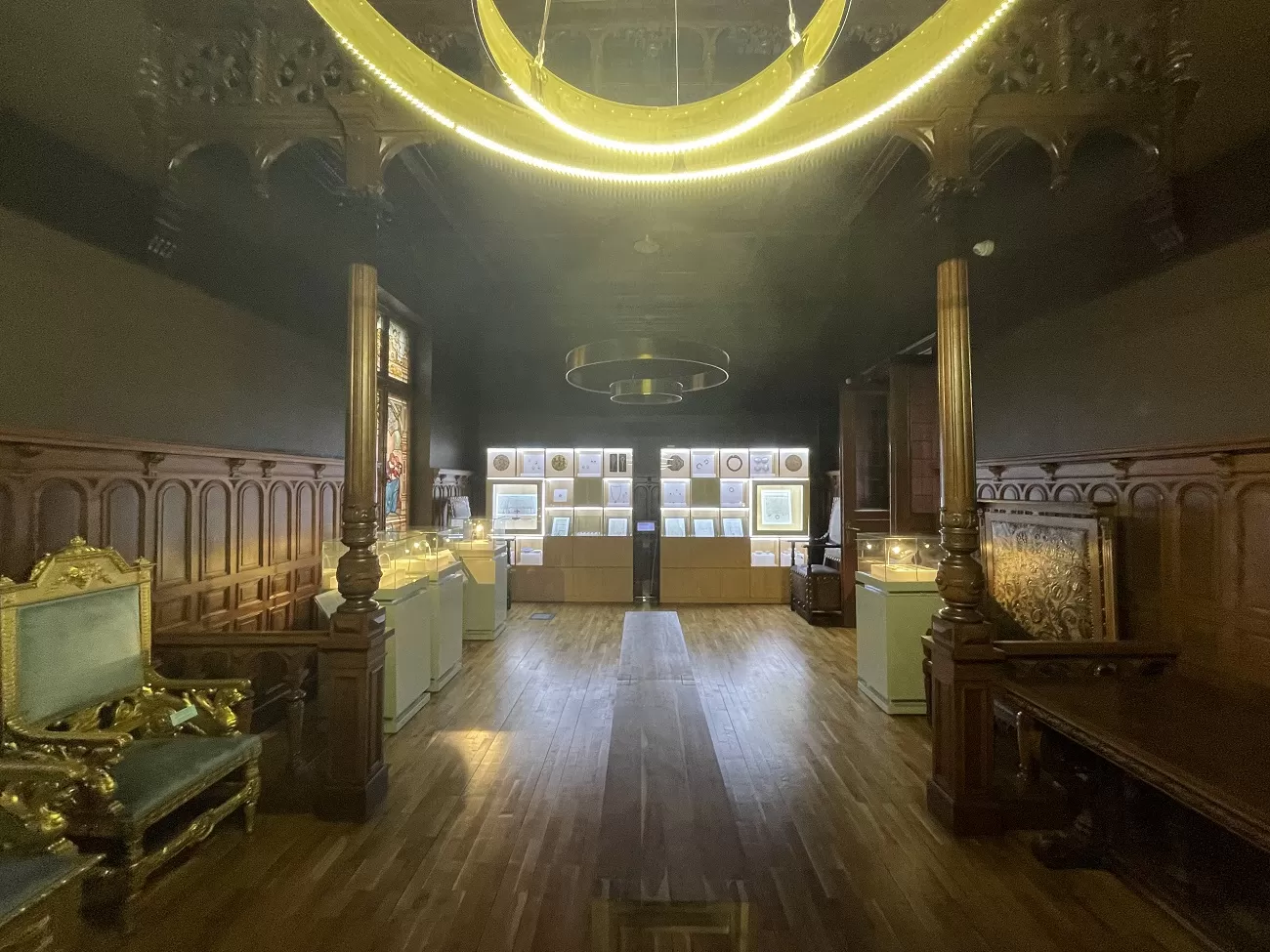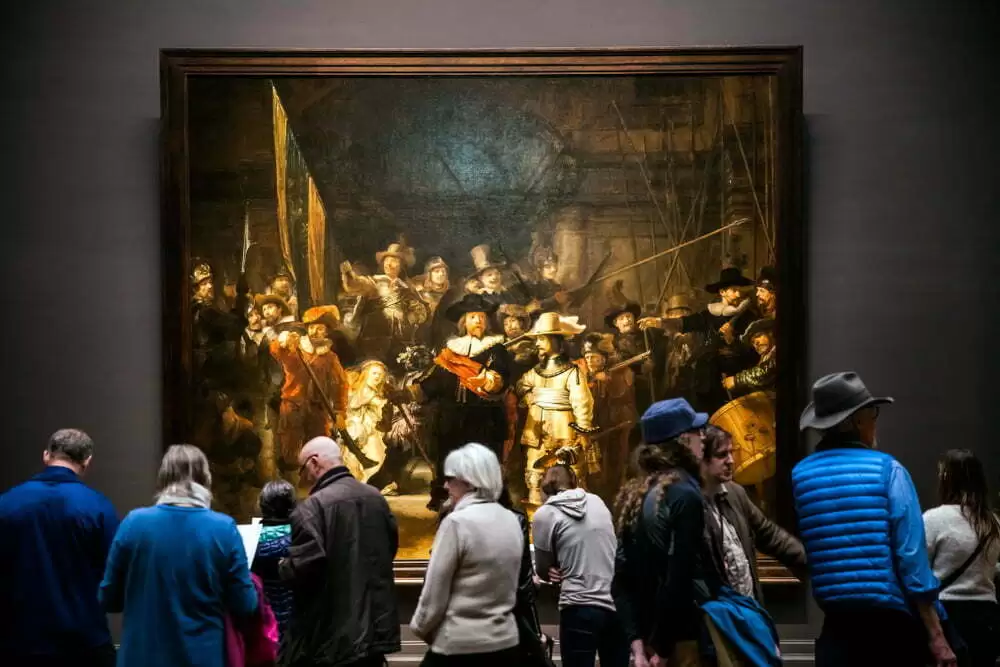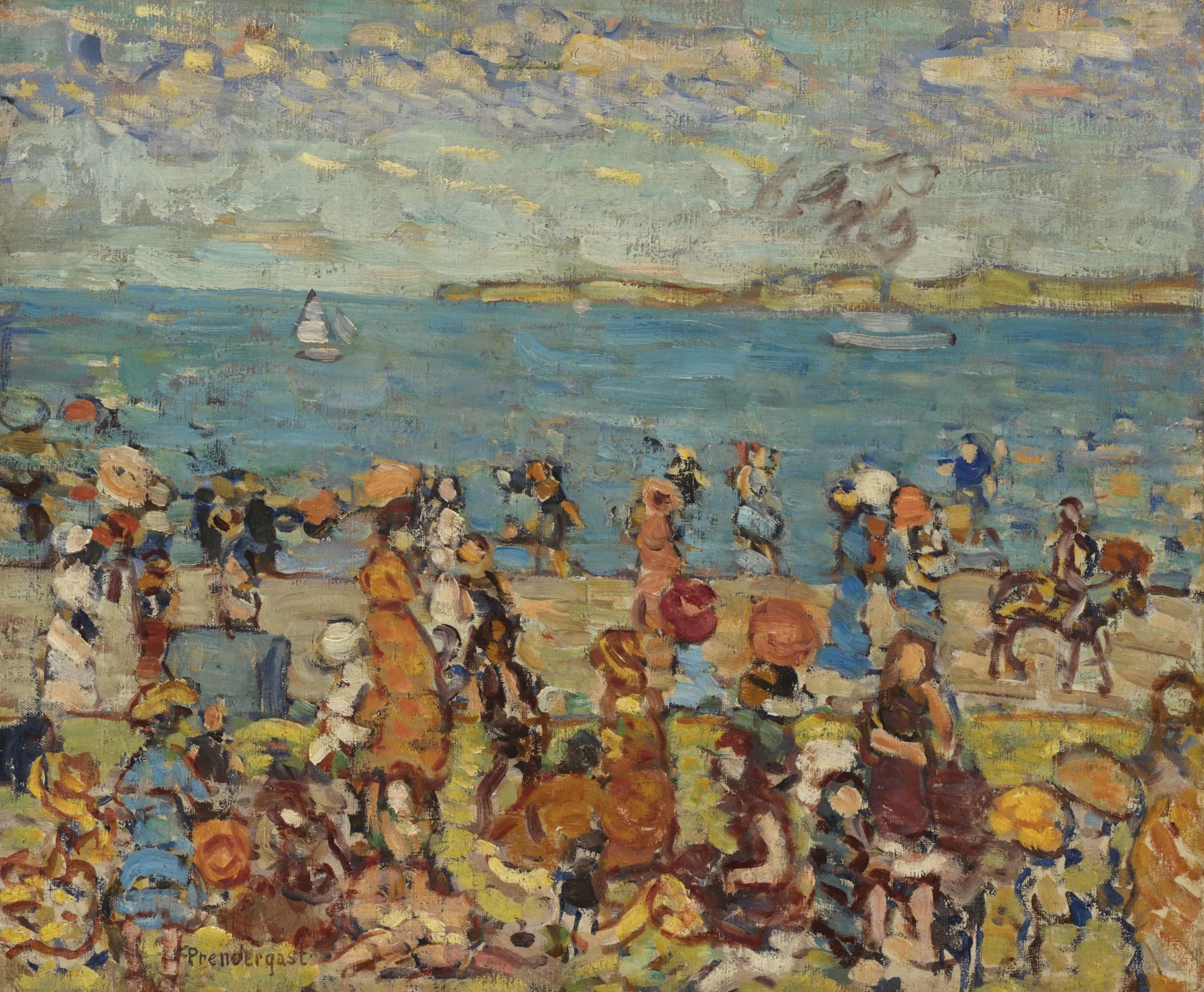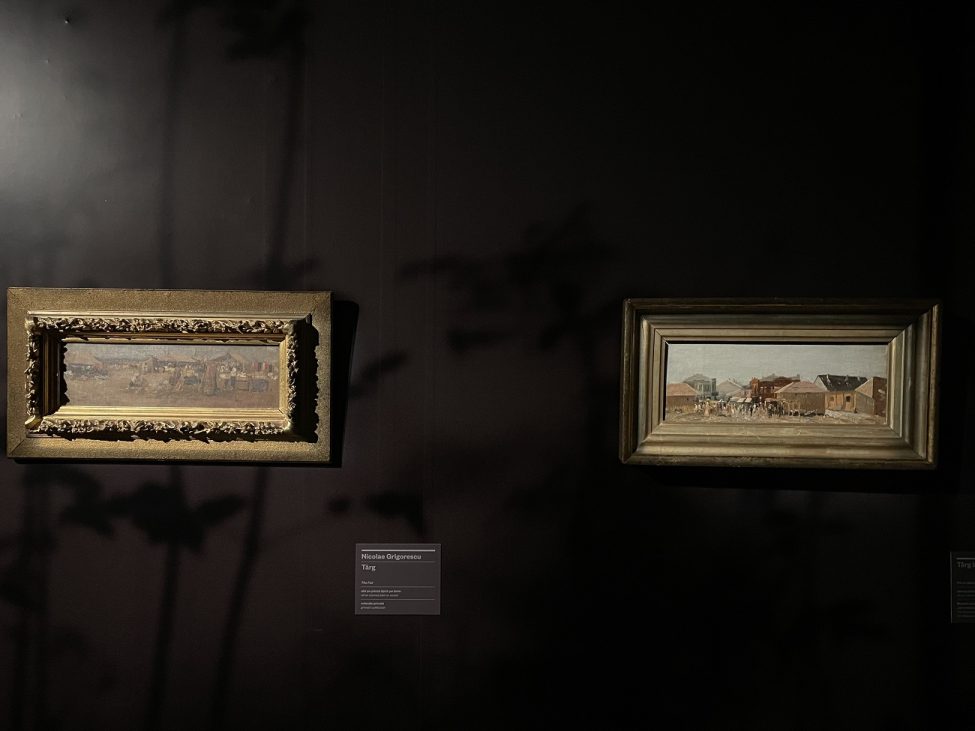
Similarities and differences between the country markets painted by Grigorescu and Andreescu
Ioan Andreescu, of whom Nicolae Grigorescu said that ‘he is the greatest artist the country has ever had’, also considering himself, was influenced by him. In 1873, having set out on the road with the modest idea of supporting himself from a career as a drawing teacher in the provinces, Andreescu decided to fulfil his artistic calling. Visiting the exhibition of the Friends of the Beaux-Arts in January of the same year, and encountering Grigoreresque landscapes infused with the modernity of the French Barbizon school, he realised his talent and decided that he must paint.
In the following decade, his creation evolved impressively and left its mark on Romanian art, orienting for the first time the creative-artistic act towards a scale of values that puts emotion and expressiveness above the surface and academic rigour.
In the wide-ranging exhibition at Art Safari #16, season hosted by the Dacia-Romania Palace until the end of July, Ioan Andreescu’s creations can be admired alongside some signed by Nicolae Grigorescu.
Different Realism
Among these, two ‘country markets’ are put in the balance. Considered to be the most outstanding representations of fairs and markets, Andreescu’s paintings are unique in Romanian art. ‘No other Romanian artist has so accurately captured the oppressive atmosphere of remote villages, forgotten by the world, where people live their lives in a gentle, egalitarian way, with a rhythm imposed by the surrounding nature,’ says curator Maria Munteanu.
‘Târg la Buzău’ by Ioan Andreescu and ‘Târg’ by Nicolae Grigorescu are side by side in the exhibition. Matching in size, the paintings also share similar features, but the visions are distinct. ‘The realism practised by Grigorescu is of a different nature from that of Andreescu’.
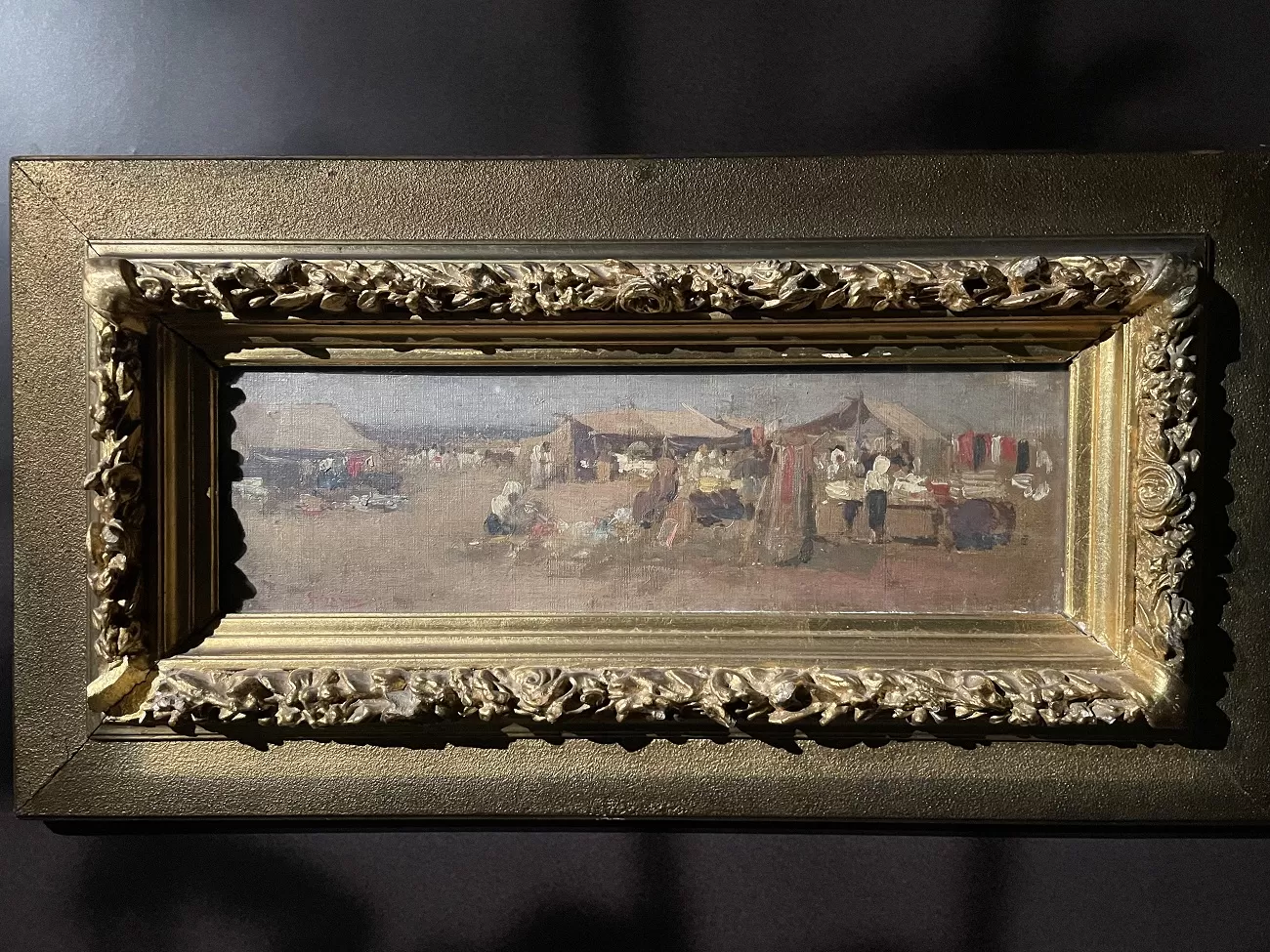
Târg, by Nicolae Grigorescu, curatorial
Grigorescu pays attention to the balance of the composition, to the correct rendering of proportions and captures the picturesque atmosphere: he emphasises the peasants’ wares in shades of red, pink and white, as well as the peasants’ clothes and animals. ‘These appearances which Grigorescu knew how to capture in his paintings, being sensitive to the most beautiful and decorative in a composition, give the unique aura of Grigorescu’s work’.
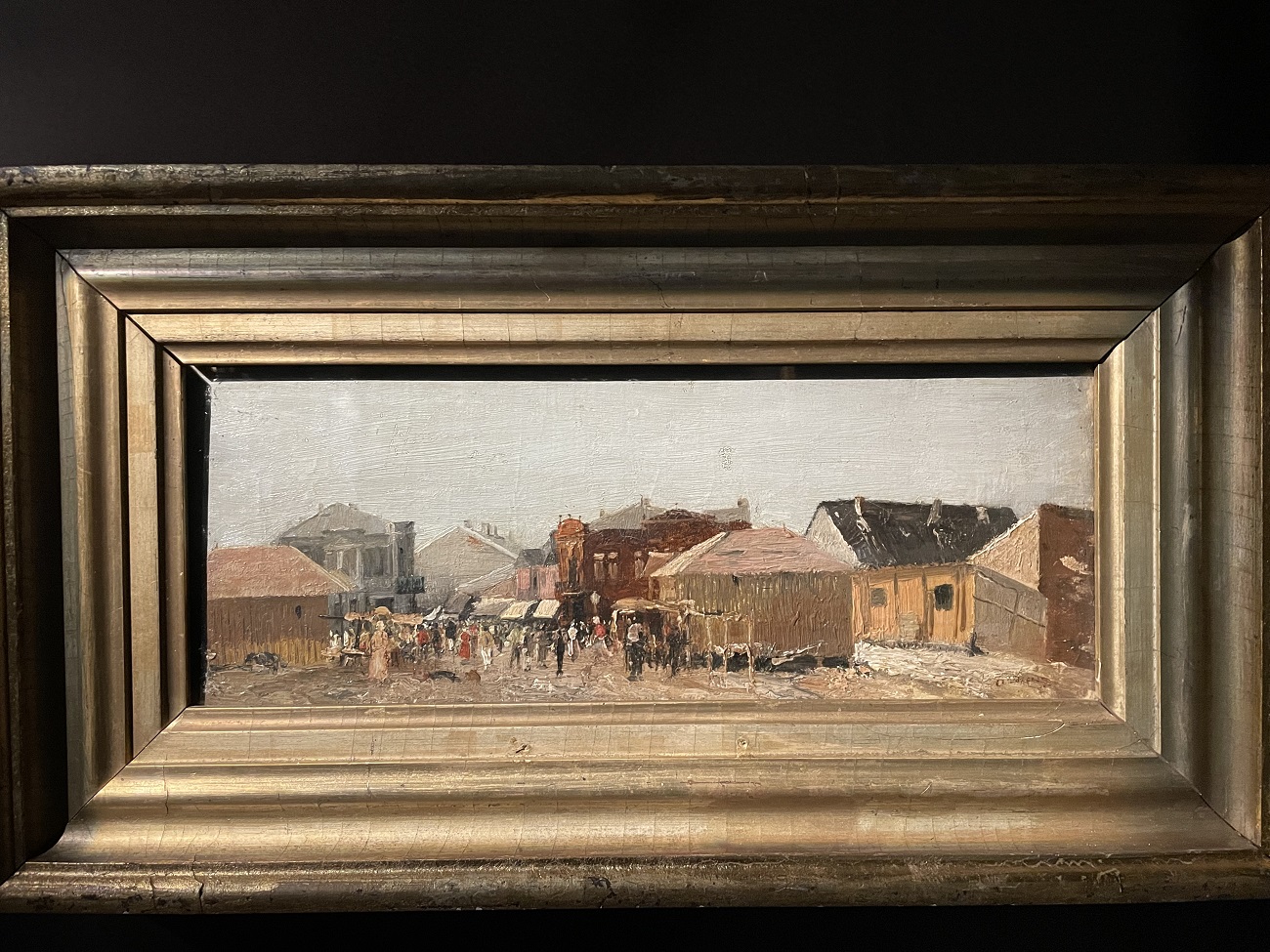
Târg la Buzău, by Ioan Andreescu, curatorial
On the other hand, Andreescu remains faithful to the dignified, serious air of a country market scene, being careful to preserve as much of reality as possible. The work in the exhibition is part of the collection of the ‘Ion Ionescu-Quintus’ Prahova County Art Museum (Ploiești). Grigorescu’s country market is on loan from a private collection.





